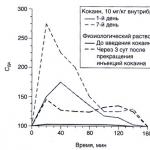Eurolining is almost the same wooden lining, only made according to the European standard DIN 68126. Latest technology processing makes this environmentally friendly material even more moisture-resistant and durable, and also greatly facilitates its installation.
This environmentally friendly material will allow you to easily level the walls or improve the interior of the room, but also visually expand the room, giving it your own individual style. So that the eurolining still for many years pleased your eye, do not neglect the following recommendations for its installation.
What tools will you need?
 In order to carry out installation correctly, without resorting to the help of professional workers, you will need:
In order to carry out installation correctly, without resorting to the help of professional workers, you will need:
- perforator;
- jigsaw;
- drill;
- hammer or hammer;
- ruler with level;
- mounting thread;
- wood screws;
Preparing for installation
 Eurolining is a material made from solid wood. Therefore, the color and texture of each panel may vary.
Eurolining is a material made from solid wood. Therefore, the color and texture of each panel may vary.
Before you begin installation it is necessary to prepare the material. To do this, you need to unpack it and leave it at room temperature for 2-3 days to allow it to get used to the microclimate of the room where it will be installed.
Installation must be carried out at a temperature not lower than 5 degrees and humidity not more than 60 percent.
5 ways to install eurolining
 1. Attach with self-tapping screws
1. Attach with self-tapping screws
With this mounting option, installation can be done both from below and from above. Using a drill, a hole is made into the panel from the tenon side for a self-tapping screw, about 10mm deep.
After screwing in the screws, the remaining holes can be covered with dowels. When the installation is complete, the dowels are cut to the level of the board and sanded.
2. Fasten with staples
Installation begins from the bottom, the boards are laid one by one.
Using a construction stapler, the staples are driven into the tenon at a 45-degree angle. In this case, the tenon of the board that will follow should easily fall into the groove.
3. Fasten with nails
This method is very similar to the previous one. The heads of the nails should not be left protruding above the surface; they should go entirely into the wood.
Otherwise, you may have problems installing the next item. When using this method, it is best to use thin zinc coated nails and a hammer.
4. Secret fastening with dowels
Laying should proceed strictly from bottom to top. The first lining is secured with self-tapping screws, and their heads are hidden with dowels. The self-tapping screw is screwed into the tenon, and the next panel masks it.
The same can be done with a construction stapler. The last panel is fastened in the same way as the initial one. The final stage is sanding so that the surface can be leveled.
5. Fastening with clamps
Clamps are staples made of zinc-plated metal. They should only be used if you are producing interior lining thin eurolining.
The clamps are secured on the back side of the tenon. The initial panel should be secured with self-tapping screws, and the caps should be masked with dowels.
The clamps are first attached to the board, which is compared with the previous one. The clamp is secured with a self-tapping screw or nail. If they do not fit together, do not hit them with a hammer - the impact may damage the groove or tenon. If such a situation arises, it is better to place a piece of lath under the hammer.
Installing the sheathing

The direction of the wooden frame depends on the direction in which you decide to lay the eurolining.
If you decide to lay them vertically, then the sheathing slats should go horizontally. If you chose horizontal or diagonal method installation, the sheathing should be directed vertically.
Thermal insulation
 Mineral wool can be an excellent insulation material. It fills the space between the lining and the wall well.
Mineral wool can be an excellent insulation material. It fills the space between the lining and the wall well.
If you need to add more hydro- or vapor barrier, you can use a water-repellent film.
It is attached with a stapler over the cotton wool - the shiny side inward.
Kleimers
 — hidden fastening by means of clamps.
— hidden fastening by means of clamps.
They are invisible from the outside and do not interfere with the expansion or contraction of wood, and galvanized steel does not corrode.
Claymers are sold in packs of 100 or 200 pcs. together with zinc-coated steel nails or self-tapping screws. You should not neglect such qualities as the elasticity of the clamps, the quality of the steel and coating.
Video - more details about clamps:
Wall and ceiling mounting
 How to attach eurolining to the ceiling? It's easy enough if you have everyone necessary tools and desires.
How to attach eurolining to the ceiling? It's easy enough if you have everyone necessary tools and desires.
Naturally, the room must have its own main ceiling and conditions for installing the frame.
The main roof should not leak. Frames for fastening eurolining can be iron or wood. The boards are installed using clamps. The junction of the ceiling board and the wall can be masked using wooden skirting boards or baguettes.
Video for the walls:
How to attach eurolining to the wall? If you decide to mount it directly to the wall, make sure it is perfectly level. Otherwise, you will need to first assemble a special wooden frame, on which you will mount the boards. There are many ways to lay eurolining.
For example, to visually expand a room, attach the boards horizontally, and to make it taller, attach them vertically. Laying it diagonally or in a herringbone pattern will help you add creativity to the room and show off your individuality.
The method of laying the eurolining also depends on the method of its fastening - from top to bottom or from bottom to top, with self-tapping screws. nails or staples. Upon completion finishing works internal and external corners are decorated with special wooden corners or hemp cord.
Finishing touches
When the finishing is completed, it will not hurt to treat the surface of the boards with an antiseptic. This will help protect them from rotting and fungus.
To make the texture brighter, you can use stain or wax. A matte varnish finish will also look good.
Attaching eurolining yourself is a fairly simple and quick task. This does not require any special skills or knowledge. In addition, at the end of the work you will not be left with mountains of garbage and waste.
How to attach eurolining to reveal all the beauty of these boards?
The lining of the decade is in demand. This material, which preserves its natural pattern, simultaneously ennobles the room, retains heat and serves as a high-quality sound insulator. In environmentally lined pure material indoors, the healthy aroma of the forest remains for years, and the humidity regime is always within optimal limits. Wooden lining absorbs moisture in excessively damp rooms and releases it into the air if the environment is too dry. The panels are equipped with special locks, so even a novice master can install and fasten the panels.
Eurolining is a popular material for interior decoration due to its environmental friendliness and ease of installation.
However, those who do the cladding themselves for the first time often wonder how to properly attach it so as not to spoil the charming appearance linings.
There are several methods, and all of them require not experience and special skills, but patience and accuracy.
Fastening with nails
Some experts, when asked how to fasten this cladding, answer: with nails or screws. How to do this?

The simplest and at the same time the most barbaric method is to fasten the lining with nails from the “face” of the product. It is possible that sometimes the plan of an architect or designer allows for this method, but then the boards are secured with special finishing nails. They differ from ordinary ones in their tiny oval cap and small diameter. This is necessary to make the nail invisible against the background of the tiled wall. Sometimes (very rarely) finishing nails may have a decorative cap. Regardless of whether the clapboard is fastened from the outside with ordinary or decorative nails, special care must be taken: the boards may split.
More experienced craftsmen They fasten the paneling by driving the finishing nails into the groove of the plank. It is difficult to do such work without experience.
At 10 square meters approximately 600 nails will be required.
The nail must first be carefully inserted into the groove, then driven into the mounting rail, then the heads must be pressed down with a hammer so that they do not interfere with further installation.
To secure the lining in this way, you need skill, experience, dexterity and time. And there is still a risk of damage to the boards.
Return to contents
Fastening with self-tapping screws
Regular (not eurolining) was often fastened with screws, guided by the following algorithm.

- A hole for a screw was drilled in each panel.
- Countersinked a secret hole intended for the cap.
- Using a screwdriver, the screw was driven completely into the frame rail.
The first difficulty was adjusting the screw head flush with the clapboard. The second is the risk of splitting the board. The screw had to fit neatly into its intended place. Otherwise, it interfered with the attachment of the next element. Today, when eurolining has appeared (it has larger grooves and tenons than the old configuration), this method of fastening has become somewhat simpler.
- Neat holes are drilled in each wooden panel, the depth of which is equal to half the length of the self-tapping screw chosen for this purpose. Of course, you can try to screw in a self-tapping screw without a previously prepared hole. Experience shows that the number of damaged (cracked) boards increases sharply.
- Using a screwdriver, the self-tapping screw is completely embedded in the wood.
- The holes are plugged with pins and ground flush.
This method of fastening the lining also leaves a risk of damage to the panels and takes a lot of time. Must have great experience to correctly and accurately drive nails, screws, screws into the right place in the lining or eurolining. It also requires a certain amount of physical strength.
Return to contents
Fastening eurolining using a stapler and clamps

Fastening the lining with a clamp is the most reliable.
How else can you attach eurolining? Those who attached eurolining to the wall on their own for the first time often claim that the most convenient way- use of staples and construction stapler. It is enough to use a stapler to insert the staple into the groove at an angle of 45°. If the bracket fits correctly, then the planks are connected as usual.
Today, the most practical and reasonable method is considered to be the method of fastening eurolining using clamps.
They do it like this:
- The lining board is installed and leveled.
- A clamp is placed on the bottom of the groove.
- Using nails or staples, the clamp is attached to the wall or sheathing beam.
- The next board is inserted with a tenon into the groove, and the operation is repeated. Every 5-8 rows it is recommended to check the compliance of the lining with the selected direction (vertical, diagonal, horizontal).
Why is it better to fasten eurolining with clamps? Because the advantages of clampers are obvious:
- The possibility of cracking of the board is excluded.
- The cladding process is accelerated.
During the installation process, a perfectly smooth wall covering is obtained.
The walls in the house take up a lot of space more space than ceilings and floors. Therefore, their design should be treated as carefully as possible, having thought through the type of facing material, and analyzing its characteristics. In addition, the walls must have an attractive appearance and be easy to clean. The article will discuss the choice and methods of fastening eurolining.
Eurolining
Wood is one of the most sought after building materials. It is popular for cladding both the facade of the house and interior work. After all, a tree is natural material, which is ready to serve for decades and has a fairly attractive appearance.
Eurolining photo

- Eurolining is a type finishing material, processed in a special way from all sides. To facilitate the sheathing, there are grooves and tenons along its edges. The sizes of eurolining may vary slightly, but the most popular material is with the following parameters:
- thickness 1.2 cm;
- width 9.6 cm;
- length 2-3 m.
- Lining - quite practical material, which is easy to install. It helps in leveling walls and hiding defects that arise when walls are plastered incorrectly. The characteristics depend on the type of wood itself from which it is made. After all, all types of wood are different in their structure and properties.
- The material for the production of this type of finishing materials is wood, both deciduous and coniferous. Conifers at a price significantly lower than deciduous ones. So, eurolining made of cedar will cost more than pine. Wood should be selected depending on its application.
- Also, other types of materials are used in production. Most economically advantageous material Euro-lining PVC is used, but in this case the finishing material is inferior in quality. After all natural wood will always look much more attractive than artificial plastic.
- If there is a need to decorate the room from the inside, then it is allowed to use finishing material with low characteristics. In case external cladding, on the contrary, you should use eurolining made of hardwood, which is not afraid aggressive environment operation, resistant to moisture and sudden temperature changes. To make it last longer, it is treated special solution, which gives greater strength and wear resistance.
A type of eurolining
Difference by class

- class "extra". This is the most elite type of lining. It differs in that it has absolutely no defects;
- "A" class. IN this type minor defects may be present;
- "B" class. There are more knots here than in the class above. The diameter of the knots is also larger;
- "C" class. The cheapest and low-quality type of eurolining. Its applications for decorative design inappropriate.
Difference by wood
- The most popular type of eurolining is board pine wood. This is due not only to the high positive performance of the material, but also to its rather low price. Pine eurolining has quite high strength, and its specific gravity relatively small. It will not create too much stress on the sheathing. This wood contains much less moisture than deciduous wood. In addition, the amount of time required to dry its preparations is significantly less than for drying other species. This fact leads to optimization of the production process and lower costs.
- Since eurolining made from pine has a high content of resins, it is durable and beneficial for the human body. After all, the release into the air essential oils can cure even advanced chronic pulmonary diseases. Yes and pleasant smell pine trees will not harm anyone, while creating good mood and a feeling of comfort. The resin itself is an excellent preservative, which significantly increases the service life of wood.

- In addition, a pine board looks quite attractive and original. It has a peculiar yellowish tint and is different beautiful design from knots and rings of a tree trunk.
The main advantages of pine eurolining:
- attractive appearance and original texture of the material;
- long service life. It is not even necessary to treat this board with special impregnations and apply a protective coating;
- low weight;
- a large number of manufacturers on the market;
- relatively low price compared to other types of wood;
- quite a wide range. The fact is that pine boards are presented on the market in all possible designs. Sizes can be selected to suit every taste. But eurolining from other types of trees of the required size is more difficult to find;
- pine is a tree that is easy to process and install. This makes it quite easy to install. You can do this yourself, without involving professionals.
Of course, in addition to pine, beneficial properties for the human body and strength associated with the presence of a high concentration of resin in the material also differs spruce lining. But it releases sticky drops of resin during its entire service life. This board is also called a board that cries. In this regard, the price of euro-lining made from spruce is significantly lower than that of pine boards.

So, let’s move on directly to the installation of the eurolining itself. In general, it is no different from installing conventional lining. The only difference is the quality of the material and the size of the grooves.
How to fasten eurolining
- Preparing walls for cladding. Initially, you need to level the wall. In this case, you should use a sheathing that is installed at an angle of ninety degrees to the direction of the lining. Lathing is not required if the walls are already fairly smooth.
- Determining the direction of eurolining. There are several types of its installation. Thus, vertical installation visually increases the height of the ceilings. Horizontal - visually increases the space of the room. But laying it at an angle will look stylish and original.
- Choosing a mounting method. There are several options for fastening eurolining. This is fastening to the wall itself or to the sheathing, fastening to special brackets with holes for installation. The last method is used if narrow eurolining is used. To do this, the bracket is nailed to the wall to connect it into a groove with the next element.
- If you need to make the fastening invisible, then you need to screw the self-tapping screw into the Eurolining tenon itself. In this case, the next element closes the head of the screw when joining and entering the groove into the groove.
- When self-tapping screws are attached to the eurolining itself, special wooden dowels. They allow you to hide the fastening and give the wallpaper a seamless look.
Preparation for work on the installation of eurolining
- Eurolining should be stored in a special way before installation. It must be in the manufacturer's packaging in a dry and clean room, there should be no sudden temperature changes and direct exposure to sunlight should be absolutely excluded.
- In order for the material to get used to environment, it is recommended to remove it from the packaging two days before the start of installation work.
- Using a dry or slightly damp cloth, remove dust and dirt from the material.
- It is very important at this stage to treat the lining with a special antiseptic solution. It prevents the formation of mold, fungi and protects against insects. After this, the slats should dry thoroughly.

- It must be taken into account that installation work for sheathing are carried out exclusively at an air temperature of at least 5 °C. Also, air humidity should not be higher than 60%.
- If you want to cover the material with special decorative varnishes or paint, then the easiest way to do this is before starting installation work. This will allow the varnish to be applied evenly and dry without streaks. When covering the walls of a bathhouse or sauna, the use of varnish is prohibited. After all, during the heating process, it will release harmful fumes into the air.
- The next step will be to correctly calculate the amount of material that will be required for the cladding. To do this, both the area of the walls or ceiling and the thickness of the board are taken into account. We should not forget that the working width of the eurolining is reduced by ten millimeters due to the fact that the longitudinal tenon fits into the groove of the next element.
Lathing for installing eurolining
- In order for the eurolining to serve for more than a decade and not lose its properties during operation, it must be fixed exclusively to flat surface. Therefore, it is often impossible to mount it on bare walls. If the walls are wooden and absolutely smooth, then in this case installation can begin without surface preparation. If the wall is made of brick, concrete or metal, then you need to start by arranging a wooden sheathing.

- It is a frame made of wooden slats, two or three centimeters thick and attached to the surface. They can be attached not only to walls, but also to the ceiling and floor. If the slats are attached to the ceiling, then the distance between them should be about 40 cm. And if on the wall, then from 50 to 70 cm. The direction must be chosen so that they are at right angles to the boards. To achieve the best result, you should use a level. In this case, the slats will be installed as evenly as possible. You should also not skimp on the material for the sheathing. It is important that the slats are straight and without significant defects. Their role is not only to perfectly level the surface, but also to create special ventilation between the wall and the lining.
Methods of fastening eurolining
- Fastening eurolining with self-tapping screws. The lining is attached with self-tapping screws on the side where the tenon is located. It is best to choose the length of the fasteners within 1-1.5 cm. After tightening, the screws should be covered using a dowel. Upon completion of the sheathing, it is necessary to trim off all protruding elements and carefully sand the entire surface.

- Finishing with eurolining using invisible fastening with brackets. The first board of the lining is applied to the right corner and cut according to the right size. After which it is fixed with the help of special staples, or as they are also called clasps. They firmly fix the cladding to the sheathing, without interfering with the joining of subsequent slats using tongue-and-groove means.

- Invisible fastening with nails. This method of fastening is similar to the similar fastening with staples. But, in this case, it is not staples that are used, but narrow nails that are galvanized. But the caps should be driven deep into the material, otherwise they will stick out and interfere with the fastening of the next board.
Installation of eurolining with your own hands
- The first board is placed as straight as possible in a vertical position in the right corner. In this case, you cannot do without a level. This is important because all other boards that are attached to the starting board must be perfectly level.
- Next, the lining is fastened using any of the methods described earlier.
- The next board must be inserted with a tenon into the groove of the initial one and driven tightly along the board. Next, check the evenness of the vertical using a level or plumb line. If even the slightest inaccuracies occur, the board should be installed anew. The angle must be strictly 90 degrees.

- The last plank is cut to size and, to make the corner more beautiful, it is covered with fittings, in particular a decorative wooden corner.
- Installation of the ceiling with eurolining is carried out according to a similar principle.
Installation of eurolining video
Eurolining care
- In order for the facing board not to lose its attractiveness and to serve as long as possible without changing its characteristics, it requires proper and systematic care, which is directly related to the processing methods and purpose of the lining.
- If the room in which the eurolining will be located is excessively humid or prone to significant temperature changes, then the boards themselves may soon change their appearance, crack and become deformed.
- All kinds of natural impregnations, oils and varnishes can be used for protection. They can also be applied during the operation of the cladding, thereby updating its appearance.
- If you treat the lining with an antiseptic containing boric salt, then it can be used to cover not only saunas and baths, but also external facade Houses. In this case, she will not be afraid of rain, wind, or frost.
- To care for the lining, the use of abrasive substances is prohibited. It will be enough to wipe the wood with a damp cloth dipped in soapy water. If you need to remove a stain on the board, you can use a solvent locally. Subsequently, treat the cleaned area with varnish or oil, depending on what material it was previously treated with.

As you can see, eurolining is a universal natural material that does not require special care, is relatively inexpensive and quite easy to install. Reliability, practicality and amazing appearance of eurolining make it a leader among facing materials.
Eurolining is very quality material for finishing. Nowadays everything more people prefer to use it to decorate the interior surfaces of premises. This is completely unsurprising. After all, it is not only beautiful and reliable, but also a completely environmentally friendly material.
Installing eurolining with your own hands is a painstaking task that may require some attention from you. But overall, this is a job quite accessible to anyone. Therefore, there is no need to pay big money to people, because it is easier and more enjoyable to do everything yourself.
Preparation of material and premises
Before you start working with eurolining indoors, you need to prepare for it. First of all, you need to purchase the basic material. To correctly calculate the required lining, you need to take into account several important points, which will affect the calculation.

As a rule, when attaching the lining on each sheet, you will lose about 7-10 mm, since the boards will be attached using grooves. The facing of the corners also deserves special attention, for which you also need to stock up on additional material. And finally, the last thing is to take into account the unevenness of the surface on which the lining will be attached. The more prominent it is, the more boards you need to buy in reserve.
When purchasing, pay attention to the thickness of the material and the quality of processing. Good lining will already be treated with antiseptics, its humidity will be no more than 12%. In this case, the tree will not be deformed and will not have any cracks or holes from beetles.
After purchasing the lining, you can start working. First you need to prepare both the base material and the room in which the finishing will be done. To do this, you need to ensure the air humidity is at 60%, and the temperature is from +7 to +23°C.
You also need to prepare the lining itself. Two days before starting work, you need to unpack it and let it lie in the room being finished. And before this, you need to additionally treat the material with a layer of antiseptic, and, if necessary, cover the boards with varnish or paint, if you decide to do this in the future anyway. This will help achieve perfect coverage no leaks. When everything is done and the material has dried thoroughly, remove the dust with a soft, dry cloth and begin the installation process.
Return to contents
Installation of frame sheathing: instructions
It is important at the first stage to clearly determine the presence or absence of sheathing. If the place in the room where the lining will be attached is quite flat, then the lathing is useless. But this happens extremely rarely, since even in the most modern houses, both the walls and ceilings are very uneven. Therefore, the presence of lathing, as a basic frame for fastening eurolining, is necessary.

The frame is best made of wood. To do this, along the height of the wall, narrow strips are attached to self-tapping screws every 45-50 cm, the thickness of which should be such that it removes the unevenness of the wall. When working you need to use building level for control.
The next step is attaching the cross bars. The distance between them should be the same - about half a meter. Moreover, these strips can be much thinner, and they will be attached with self-tapping screws directly to the longitudinal strips, and not to the wall surface itself.
Another option for sheathing is exclusively longitudinal strips. This design will be no less reliable if small bars are nailed to the wall under the planks every 50 cm, preventing the thickness from distorting the wall. And then place the main planks on the bars using self-tapping screws. This option is preferred by builders, as it is more economical.
In the world of metal, plastic and concrete, it is quite difficult to feel comfortable. It’s prestigious to live in a house decorated with technological materials, but you will be haunted by feelings of cold.
The presence of wood in the interior will bring the missing warmth and create a natural microclimate. And if you decide to sheathe wooden slats walls, the issue of wall decoration and comfort should be resolved at the same time.
The lumber is suitable for both interior and facade finishing. But you shouldn’t make the entire wall the same type, relying on decorative features sheathing, because the fine texture of the boards in small spaces looks uninteresting. It is welcome in the form of panels, and goes well with other textures, such as plaster or wallpaper. The balcony looks decent, where such cladding is especially appropriate.
 The natural material is made from well-known tree species that grow everywhere.
The natural material is made from well-known tree species that grow everywhere.
Ennobled look "Extra" - from coniferous species and aspen, is considered elite and suitable for interior decoration.
Cladding boards of grade A also belong to upper class. B and C are in demand for outdoor use. In addition to eurolining, there are also decorative types(blockhouse).
The slats vary in length and are available in 4 sizes: 2 100 mm with a subsequent increase in parameters by 30 mm - 2400 etc
In general, the assortment allows you to choose a material based on the capabilities and ideas about the practicality of cladding.
In addition to environmentally friendly lining, a polymer analogue is also produced. For specific premises suitable slats are selected certain type wood, and priority depends on the purpose of the room. Thus, a bathhouse is not finished with pine for the reason that it reacts to high degrees by releasing resin.
Plastic panels are relevant for baths and kitchens - they are beautiful in appearance, but do not pretend to be compared with natural energy tree.
Walls made of natural boards are:
- warm
- good sound insulation
- the smell of the forest
- long service life
Making cladding is not difficult if you have patience and have at least approximate skills in working with tools.
At the preparation stage, the boards are covered protective composition(basic “Pinotex”). For shade, they are treated with stain or glaze (for example, “Belinka”), but this is already at the finishing stage.
After the process, they need to be dried well, and brought into the house a day before the start of work, so that the wood does not dry out later.
Installation with clamps, nails and staples

The finished sections should fit snugly against the wall with a fixation step of 50 cm. Initially, the frame of the structure is leveled using a level or plumb line.
The space between the sheathing slats will provide air circulation and long and high-quality operation. Insulation is laid out over the entire area, and waterproofing is placed on it. Both layers not only retain heat, but also make the walls soundproof. In our case, the lining is attached to the sheathing, which Necessarily processed antiseptic primer.
The method of choosing a mount is up to you. In fact, there are several of them, and you will determine for yourself how it will be convenient to insert the tenon into the recess of the board.
The fastening is:
- secret
- external
executed:
- staples
- screws
- nails
- clampers
What are we going to fasten it with?
Regarding fixation, it should be noted that you should be careful in your actions, otherwise you can split the bar. When using nails, use a hammer - this will help to completely sink the head into the canvas, but try not to damage the groove.

If you have decided on this point, it’s time to move directly to the process. Even before the construction of the sheathing began, it was necessary to determine the vector direction of the sheathing, and now you only need to align the guides.
If you want to lay the lining horizontally, create a visual impression wide room. When the planks move vertically, the ceiling will rise, but the space will narrow. The preference is yours.
Horizontal version
The principle of the arrangement of the planks starts from the ceiling and moves towards the floor with a similar direction of the grooves. This will prevent the entry of debris and small fragments from the outside, as well as the possibility of moisture penetration.

Note on working with block house lining, similar in appearance to rounded log.
- The groove should point upward and the side of the board, according to the idea, should hide the border of the connection. In principle, there should be no gaps left, and to avoid them, the planks are adjusted with a hammer or a piece of lath.
- The parts are connected to the sheathing with nails with small heads, which are successfully hidden under the next element.
All that remains is to tidy up the corner. To decorate it, a beam is inserted between the slats, masking the longitudinal gap, and also protecting it from drafts. The facing is ready.
 The layout of the lining with an upward direction starts from the corner. It's simple: clamps are inserted into the first facing part and nailed to the sheathing. The caps will then be hidden by the inserted corner or you can bite them off with side cutters
The layout of the lining with an upward direction starts from the corner. It's simple: clamps are inserted into the first facing part and nailed to the sheathing. The caps will then be hidden by the inserted corner or you can bite them off with side cutters
Further actions completely duplicate the above principle, and the smooth canvas forms a flawlessly designed wall.
At the final stage, beautiful slats, baseboards and corners are nailed down.
We install lining on aerated concrete walls
Let's consider the option of cladding directly onto the surface without a wooden structure.
- From a collection of materials, we select strips with a defect for the guides, pre-treated with a protective compound.
- Take a drill bit for concrete 6 mm and make holes.
- We set the first level in both planes.
- Insert a dowel into the finished hole NAT 6.
- We screw self-tapping screws into the grooves of the planks and insert them into the nylon dowel.
- We control the exact location of the guides. For correction, we insert fragments from hard linings.
We will prepare clamps for fastening and fix each one 3 carnations. The way to work with them is this:
- A fastener element is inserted into the groove and nailed into the open holes. In the process we use an extension - an inverted nail with the tip sticking out forward. This technique will prevent deformation of the wooden edges;
- Drowning 2 nail, turn the clamp according to the vector directed towards the sheathing. We track the vertical of the bar;
- All that's left is to score 3rd nail in the center. We nail the finishing part with a thin nail along the edge, and the imperfections of the fasteners will be hidden by the decorative plinth;
 In front of you is a solid surface where you need to cut out a place for the socket.
In front of you is a solid surface where you need to cut out a place for the socket.
Since it was provided in advance, you took care of running the cable and only covered it with cardboard while you were working.
At the time of cladding, its location was marked on the boards in the neighborhood. Therefore, it will not be much effort to bring the system outside. Now we cut out the opening using a wood cutter. We install a tree box into the gaping space, and now all that remains is the electrical work.
Decorative tinting moments are left on last stage. A translucent glaze that creates a protective barrier with a translucent structural surface is relevant.
Everything is learned in practice, and the experience gained and confidence in your abilities will push you to other achievements in home improvement. Go ahead and let your design be unique!

















